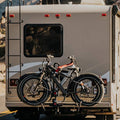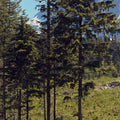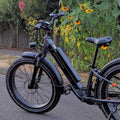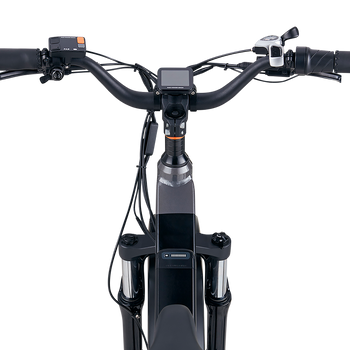Flat Tires No More

The only thing worse than not being able to ride is having to stop your ride because of a flat! You may have experienced this scenario or heard it from another rider. You are riding your bike, maybe you are commuting, maybe you are on a nice leisurely ride, or perhaps you are out for a bit of exercise. Partway into your ride, disaster strikes. It might come in the form of a loud bang, or suddenly you feel your steering go wobbly, the bike fishtails but you are not braking, and the pavement suddenly feels oddly metallic. You pull off the road and look at your bike, and your heart drops, the tire is as flat as can be, your rim is resting on the ground, and you are going nowhere fast.
Proper preparedness is important, especially in flat tire situations. This guide will walk you through how to change a flat, how to avoid flats, and what to keep in mind when buying tires.
1. Changing a Flat
Despite your best efforts, most riders will experience a flat at least once while riding. Replacing a tube isn't as daunting as you think. Here is a video that will take you through the steps for how to remove your wheel, replace your tube, and get you back riding!
Every time you ride, you should bring with you all of the required tools to remove your wheel, a patch kit or a replacement tube, and some way to inflate the tire back to a ride-able condition. Check out this video for more information on what tools and parts to carry with you.
2. Protecting Against Flats
Even better than having to sit on the side of the path and replace or repair your tire, trying to prevent the flat in the first place will save you all of that time and more! Here are some tips for you that will seriously reduce, and can nearly eliminate, the likelihood of a flat tire and keep you riding.
- Avoiding debris is the first recommendation, but easier said than done. One habit to get into for sure is looking down the road for glass, nails, tacks, etc., and anticipate routing your bike around if possible. Make sure you keep your eyes on other riders, drivers, and pedestrians as you ride too.
- Check your tires before you ride for signs of wear and tear. Older tires are more prone to flats and it is a good idea to replace them when they show signs of reduced tread and/or sidewall wear.
- Maintaining your tire pressure will make a big difference in the overall performance of your ebike and help you avoid “pinch” flats where the pressure has dropped so low that things get pinched between the wheel and the riding surface.
- Install tire liners, which are thick strips of material that go inside the tire to add an extra layer of protection between the tire and tube.
3. Tire Guide
There are also certain tires and products that you can use to better prepare for and protect against flats. Here are two:
- Reinforced tires. Another way to minimize flats is by getting a bike tire that is built to be more flat resistant. These generally have Kevlar or some other special reinforcing material that makes it harder for sharp objects to find their way to the inner tube.
- Tire sealant. Another option for riders is electing to go with a sealant, like Stans or Slime. The sealant will seal a puncture, stopping the air leak. Though after a certain point the tube and tire may develop so many punctures that the sealant may not be able to seal them all. Also with some brands of sealant, the tires need regular rotation to stop the sealant from massing in one section of the tube due to gravity and solidifying, creating an imbalance in the tube, and rendering the tube useless and requiring replacement.
4. Buying Tubes & Tires
Buying new tubes and tires can be intimidating. Walking into a bike shop and over to the wall of different numbers and sizes and codes, it is difficult to make sure you buy the right product. If you are feeling particularly lost, ask an employee to help you out, otherwise here are some good points to keep track of:
- Schrader or Presta? When purchasing tubes, you will first have to know what valve stem you have: Schrader or Presta. Schrader valve stems are like car tire valve stems and are probably the most common on electric bikes currently. Presta valves are narrower and are generally found on high performance mountain and road bikes. Different valve stems require a different pump head, but most bike pumps either have a dual-head to accommodate both Presta and Schrader, or the pump may have an adapter to make it cross-compatible.
- Numbers? Sizes? If you buy new inner tubes make sure you buy the right size to fit your tire. Look at the sidewall of your tire and you will see what size it is. Most ebikes are 26” or 700C in diameter although some may be 20” for folding ebikes. The width varies quite a bit between tires but you will usually find that inner tubes are labeled with a width range like: 26” x 1.75-2.25” or 700C x 28-35mm.
- Which brand? Deciding what brand to go with can be an equally hard choice for any product. For cycling and ebiking, turn to the local staff for help. They will be familiar with the local riding conditions and terrain and be able to give you the best recommendation.
To even the most seasoned of cyclists, a flat tire is a bummer. To a new rider, it can be absolutely devastating. Thankfully it’s not the end of the world and hopefully this article will help in reducing and removing flat tires from your rides!







